We visited Chernobyl a couple of years ago, before the utterly splendid award winning drama was broadcast. At the time it wasn’t an obvious choice as a place to visit but we learned that the exclusion zone had been considered safe enough for tourists and we thought that it would be fascinating. Many people asked why we wanted to visit and there were many reasons: an interest in the power industry, to visit a ghost town where nature has reclaimed the area in just 30 years and also to see Communism frozen in time. This event happened in our lifetime, during the Cold War, and it’s something we remember very clearly. But, while the primary reason that many people travel is to have an enjoyable time, visiting new places provides travellers with the opportunity to learn about different cultures and, importantly, about history. It’s may be a cliché, but the phrase ‘travel broadens the mind’ really is true. And while it is impossible to enjoy a trip to Chernobyl this was an opportunity to learn about so many aspects of recent world history.
After arriving in Ukraine the first day was spent on a walking tour of Kyiv. It’s a lovely city and one which we’d like to explore further. As part of the tour we visited the Chernobyl museum to learn more about the circumstances of the accident and the brave people who rushed in to deal with it as well as the thousands of people who lost everything when they were compulsorily relocated. The museum’s theme is that of ‘fallen apples’ – those who cannot return home.
The following two days were spent in the zone, a two hour drive from Kyiv.
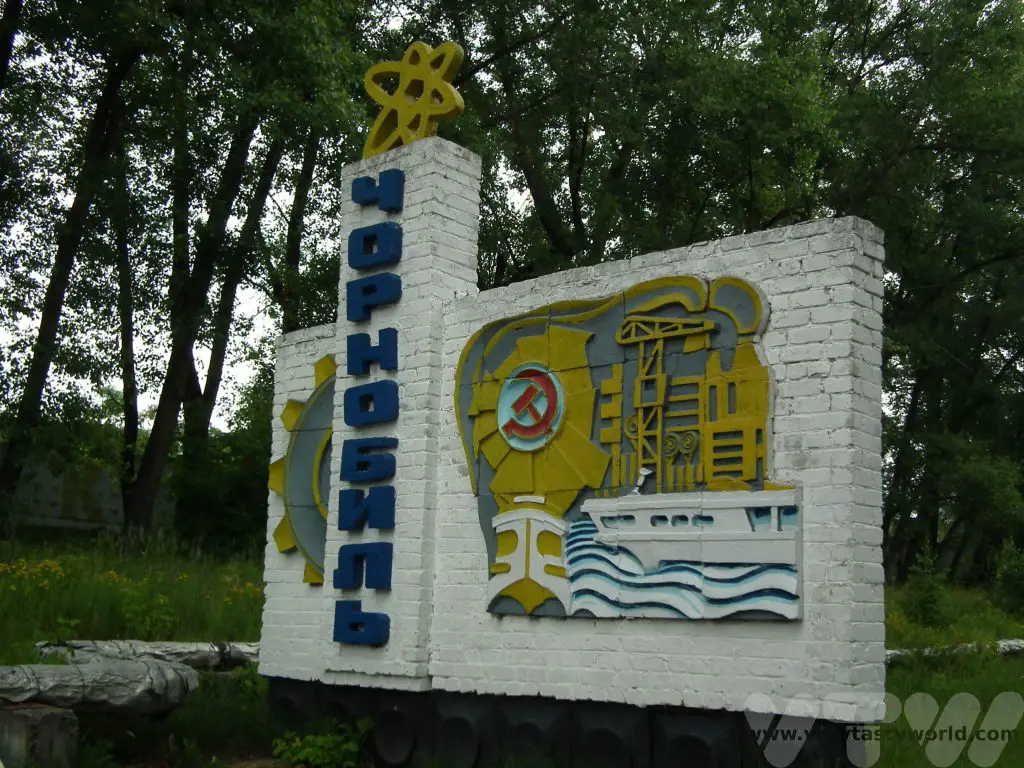
We visited the reactor – noting the astonishing engineering involved in constructing the safe confinement shelter – as well as the surrounding area.
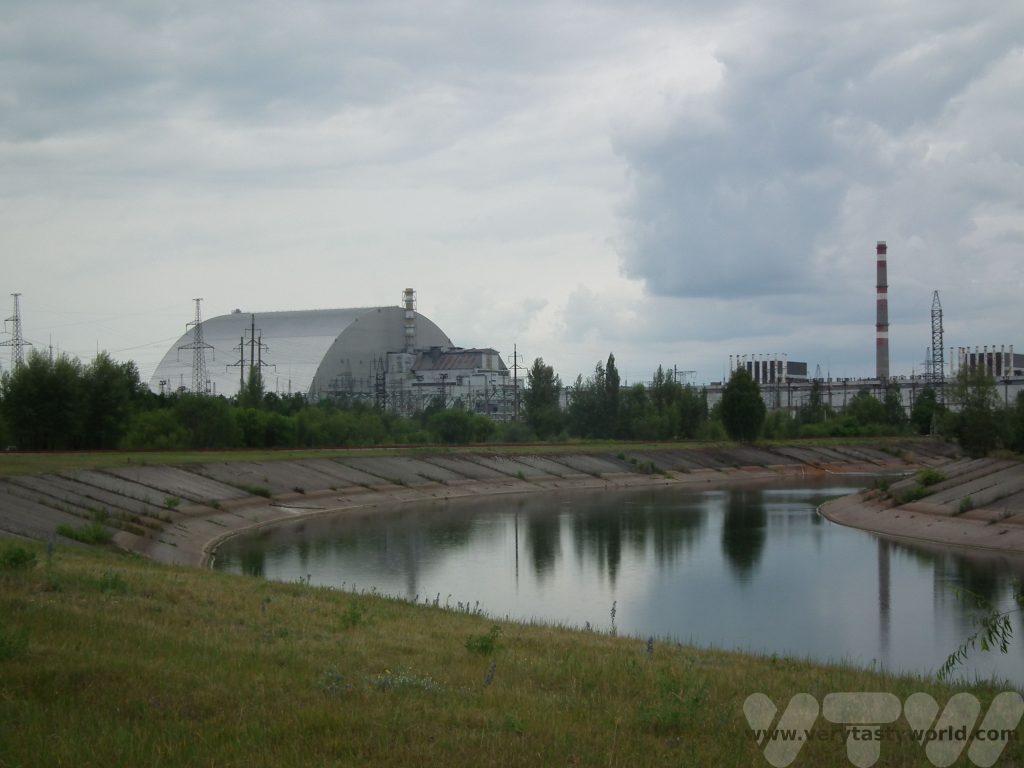
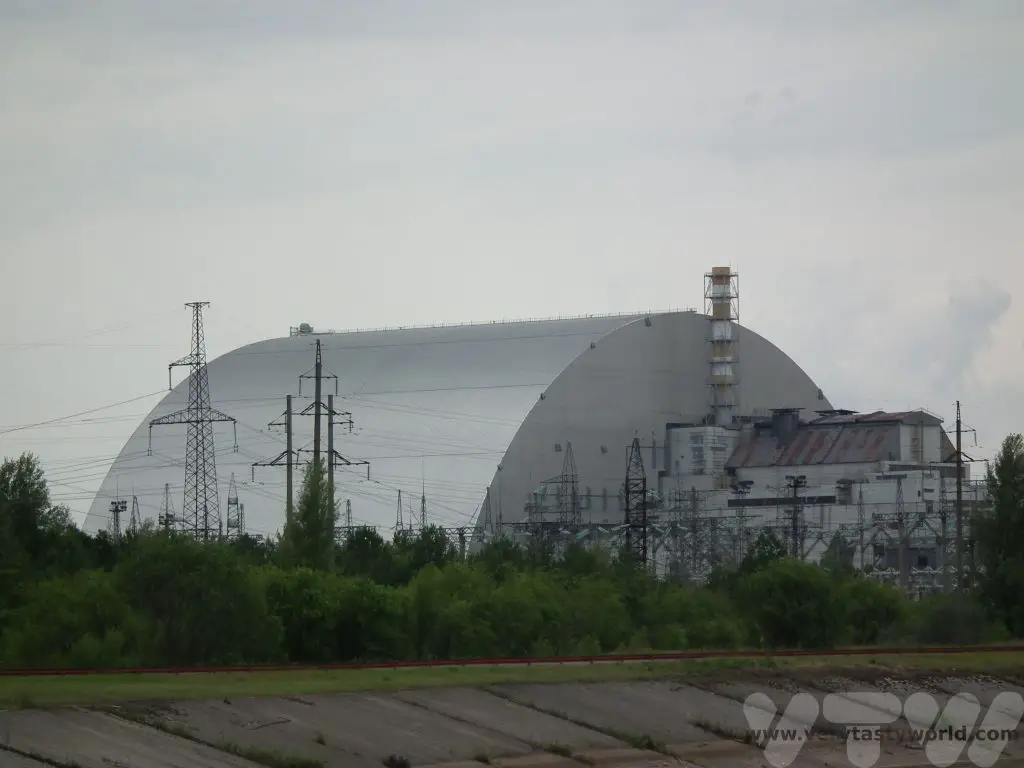
There are two exclusion zones, one more contaminated than the other. There were a number of rules we had to follow. We had to wear long trousers and long-sleeved shirts. Closed shoes. (We wore really old clothes and shoes that we intended to throw away at the end of the trip.) We were not allowed to eat berries or drink water. We weren’t allowed to pet any of the cats or dogs we encountered because we didn’t know what they might have been rolling in.
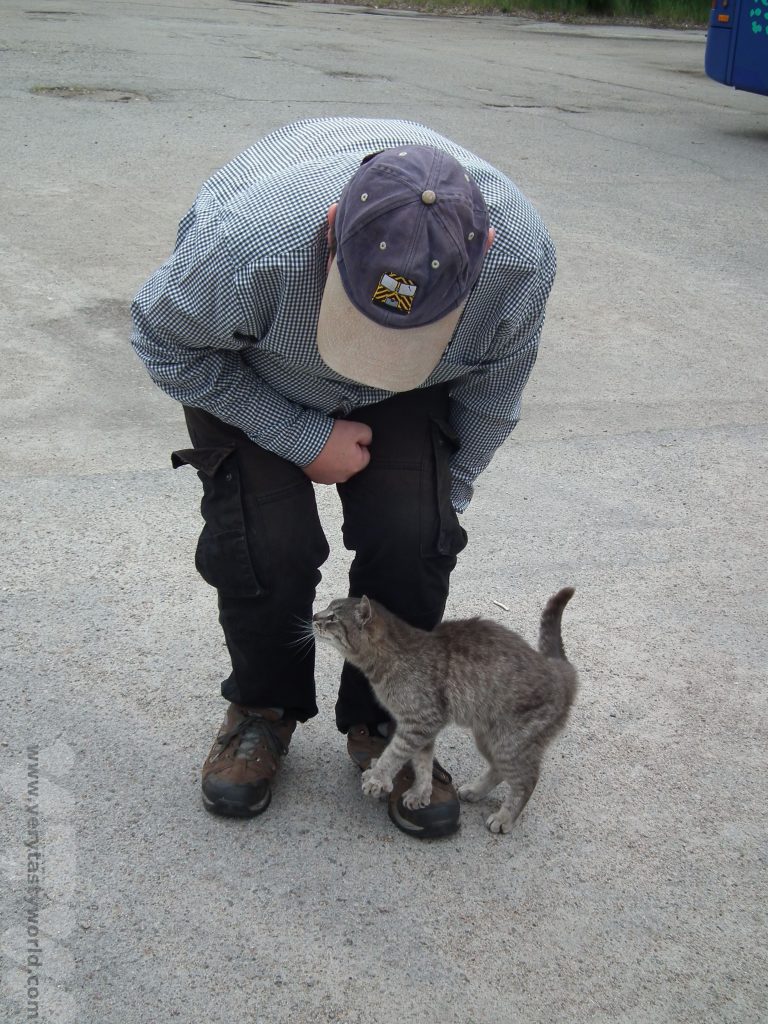
One cat really, really, really wanted a hug. (No, she didn’t get a cuddle or even a stroke and we chucked the very old trousers at the end of the trip.)
We were advised that we should only eat food and drink bottled water inside the bus. We should stay on the asphalt if possible and avoid mud. Every time we left the zone we would have to be tested for radioactive contamination by passing through a machine. The coach’s wheels were also tested. We were not allowed to take photos at the checkpoints.
It is well known that wildlife has returned to the area in significant numbers – wolves, bears and lynx have all been sighted. We saw a fox, known to the guides as Simeon, who popped out to greet us (hoping for some food) on the empty road to Pripyat.
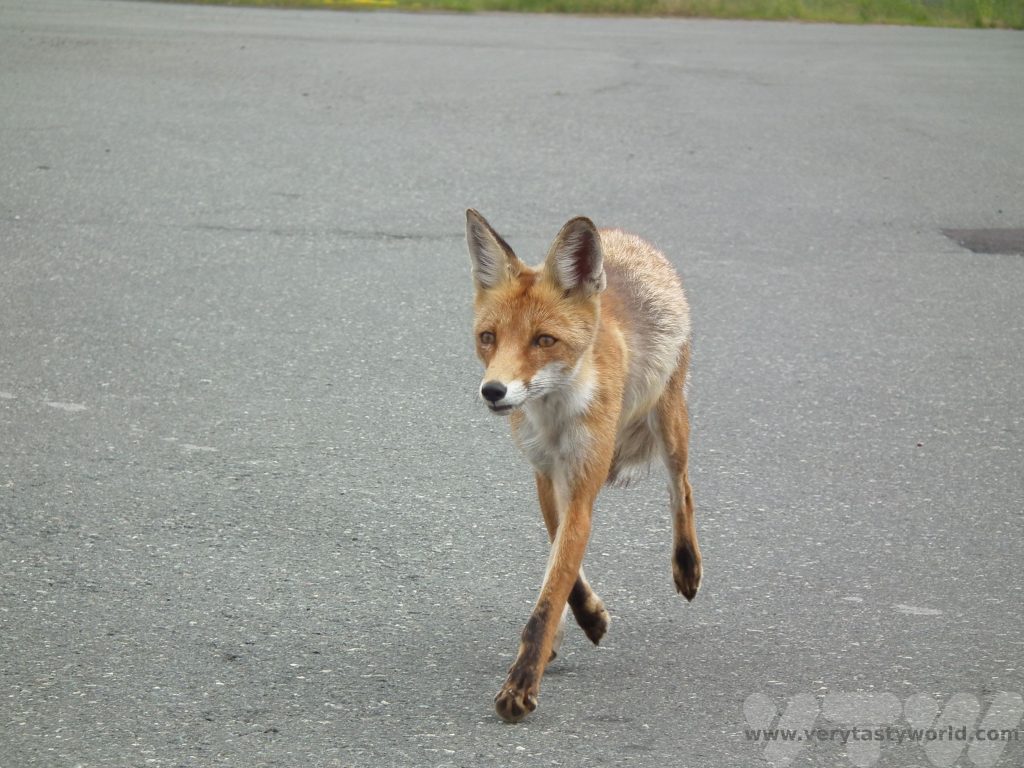
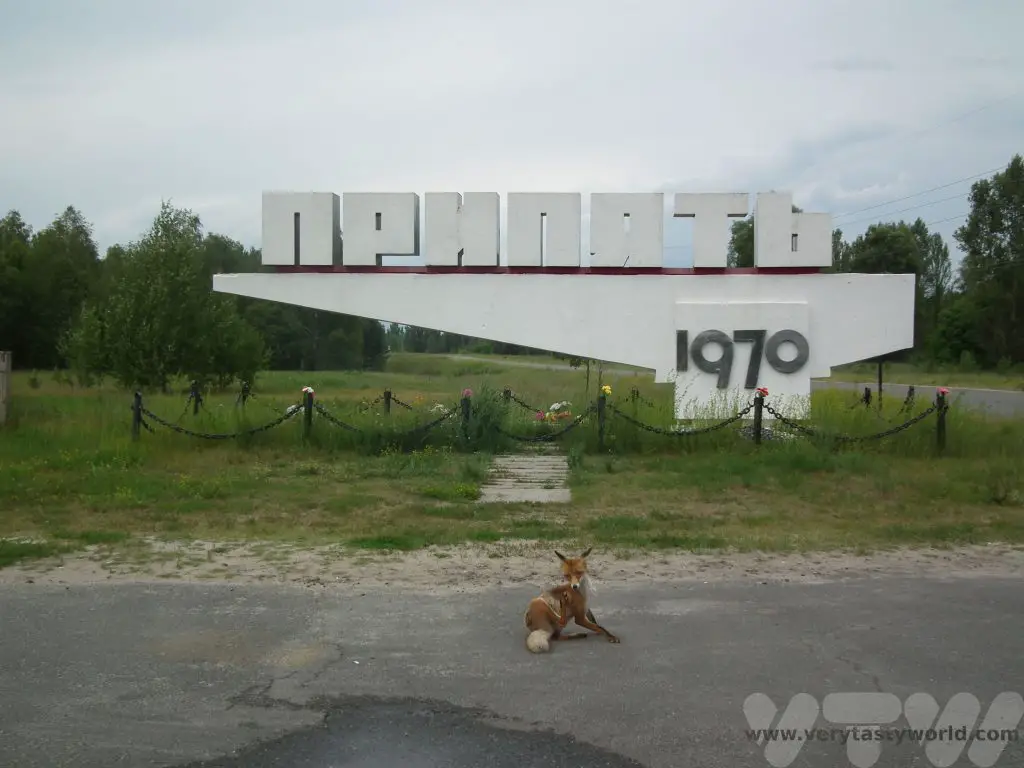
Pripyat was the city that suffered most contamination following the accident. It was the place where most of the personnel from the power plant lived. It was fascinating to explore this ghost town. We were allowed inside the buildings although many of them are not particularly safe. While we felt okay entering public buildings we were very uncomfortable entering people’s homes, despite the fact that they had already been looted by unscrupulous thieves (to the extent that even wiring had been ripped from the walls in order to reclaim the copper) many years previously.
The city had accommodation blocks..
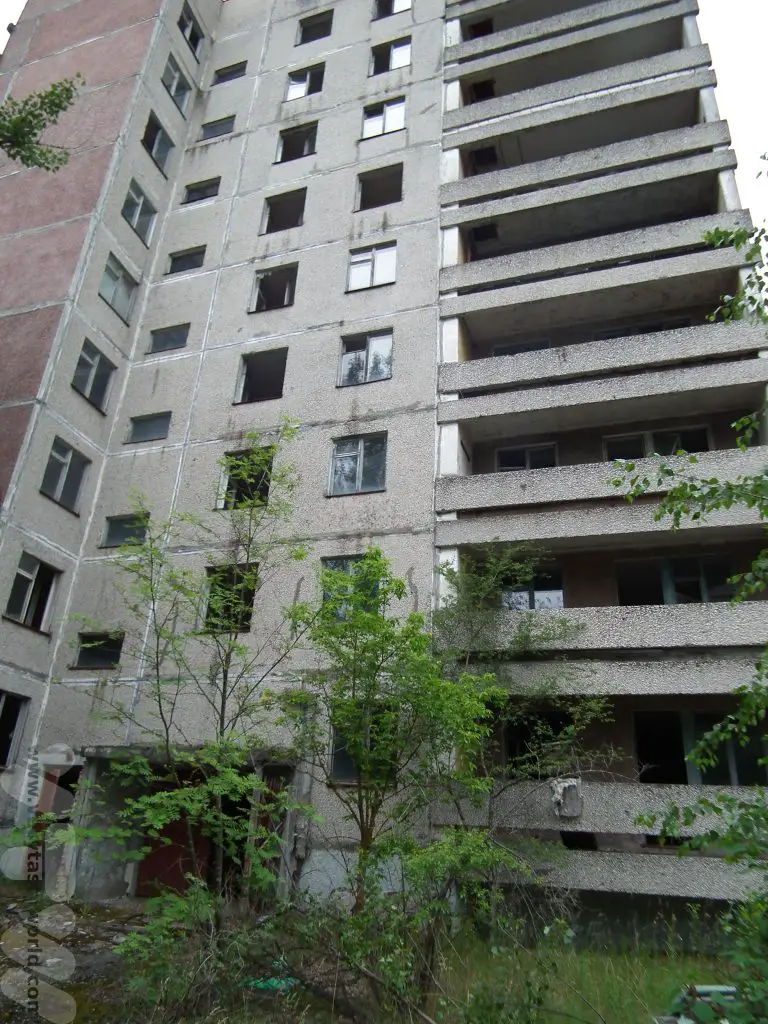
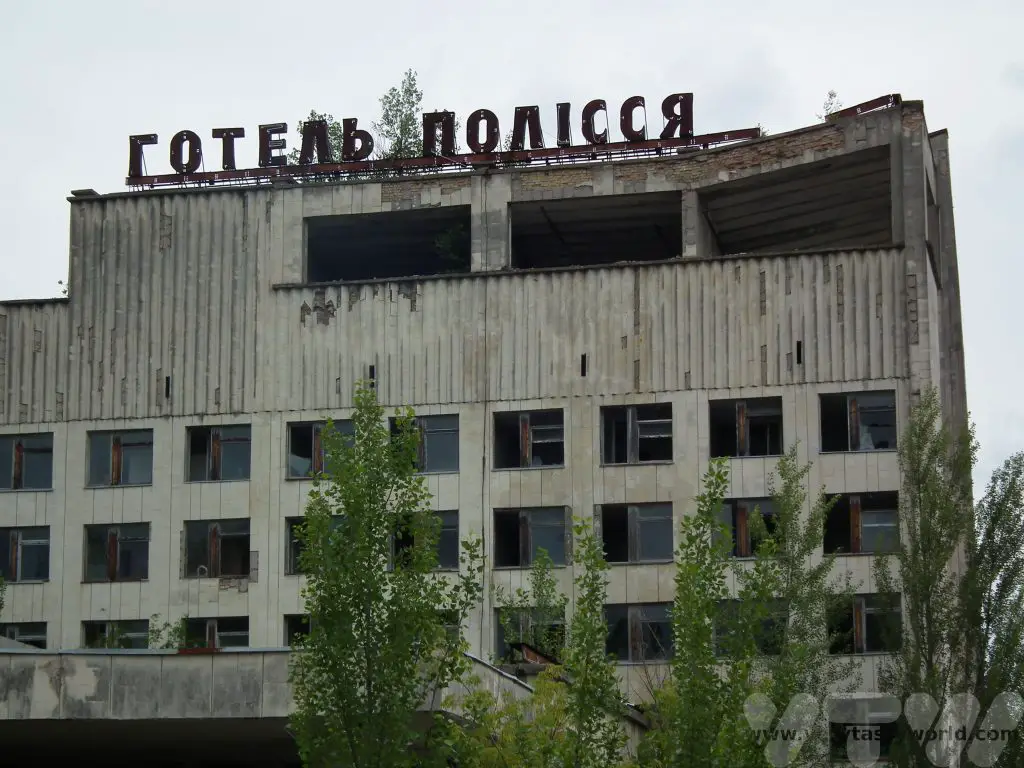
A hotel…
A school…
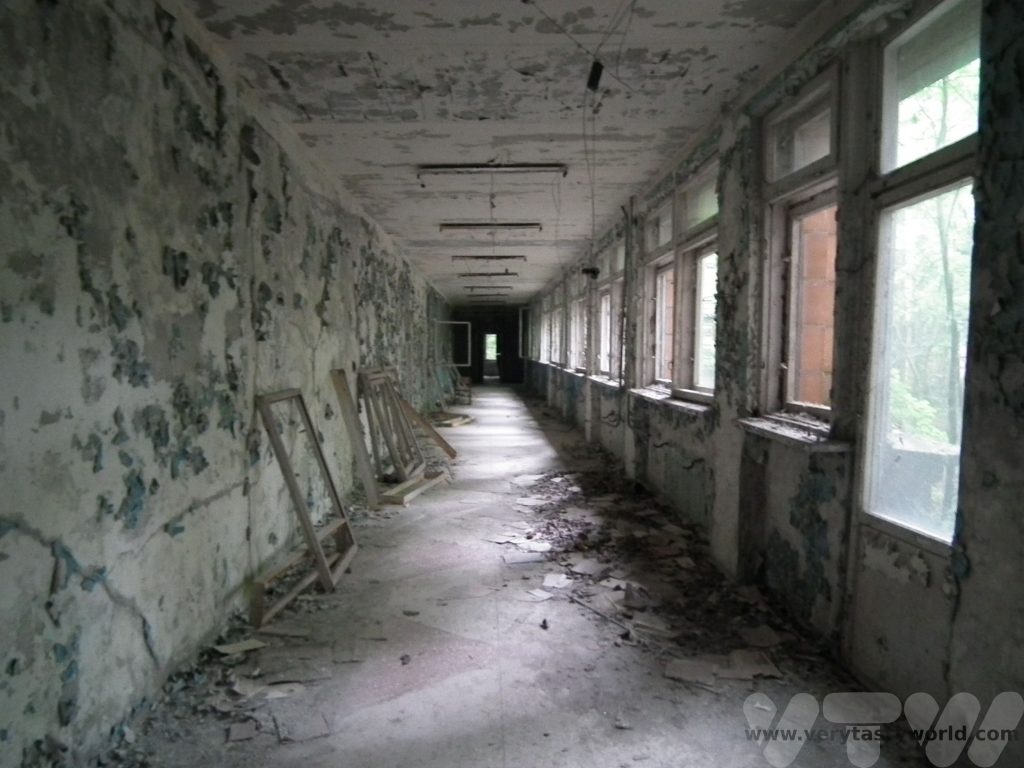
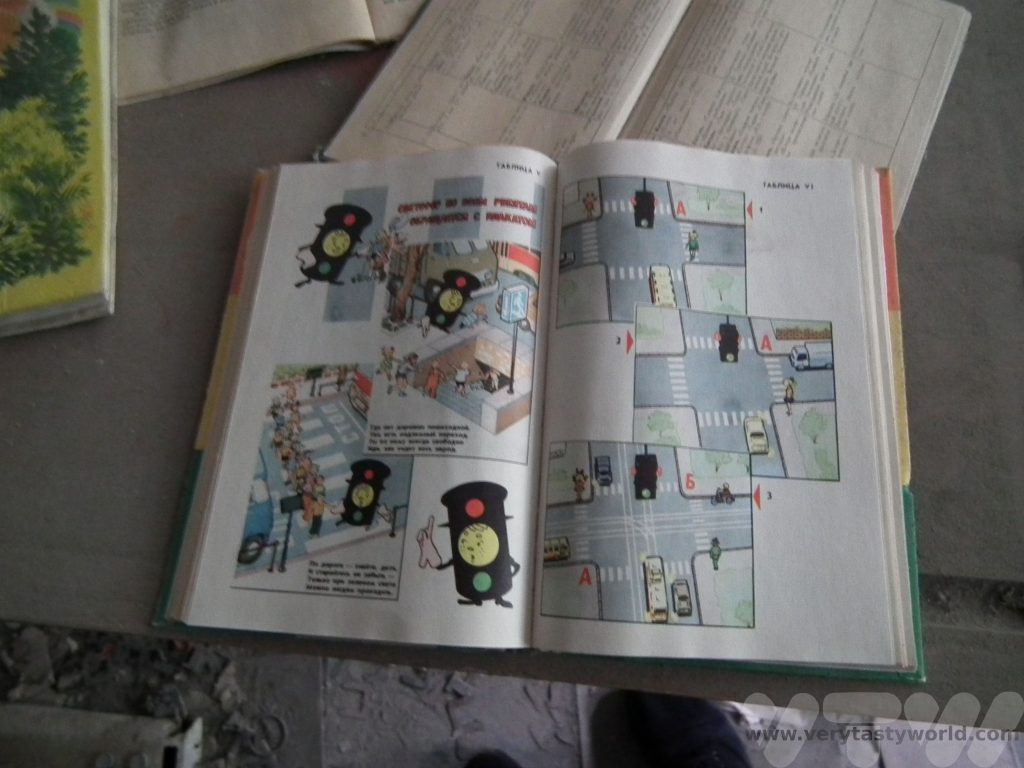
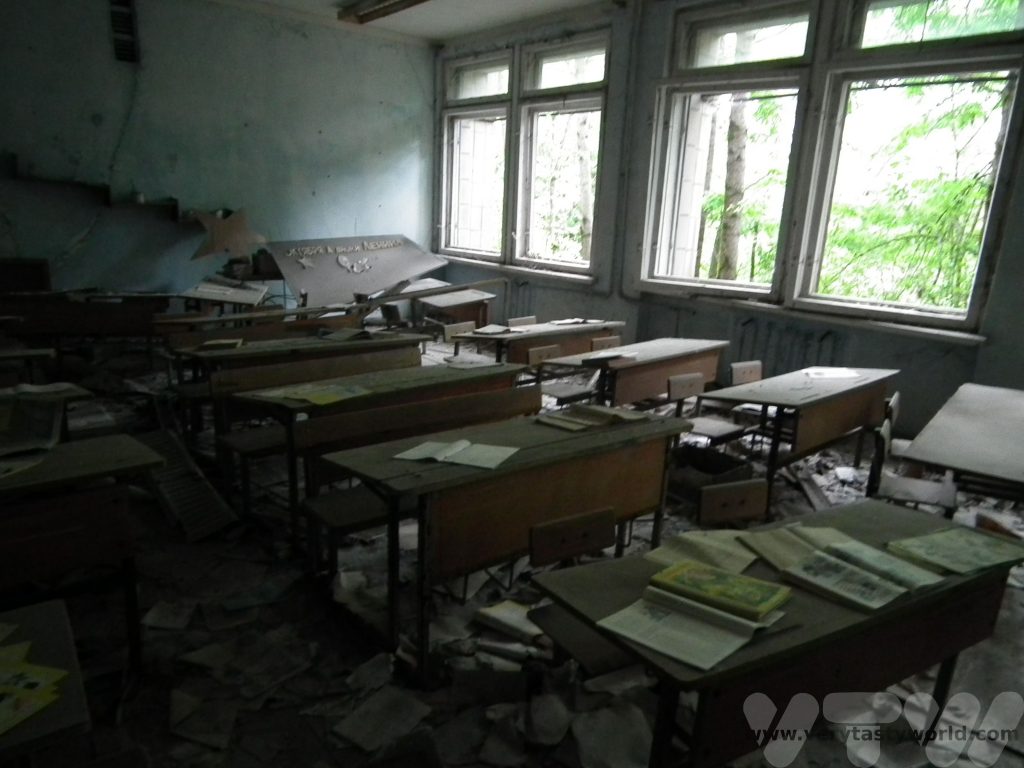
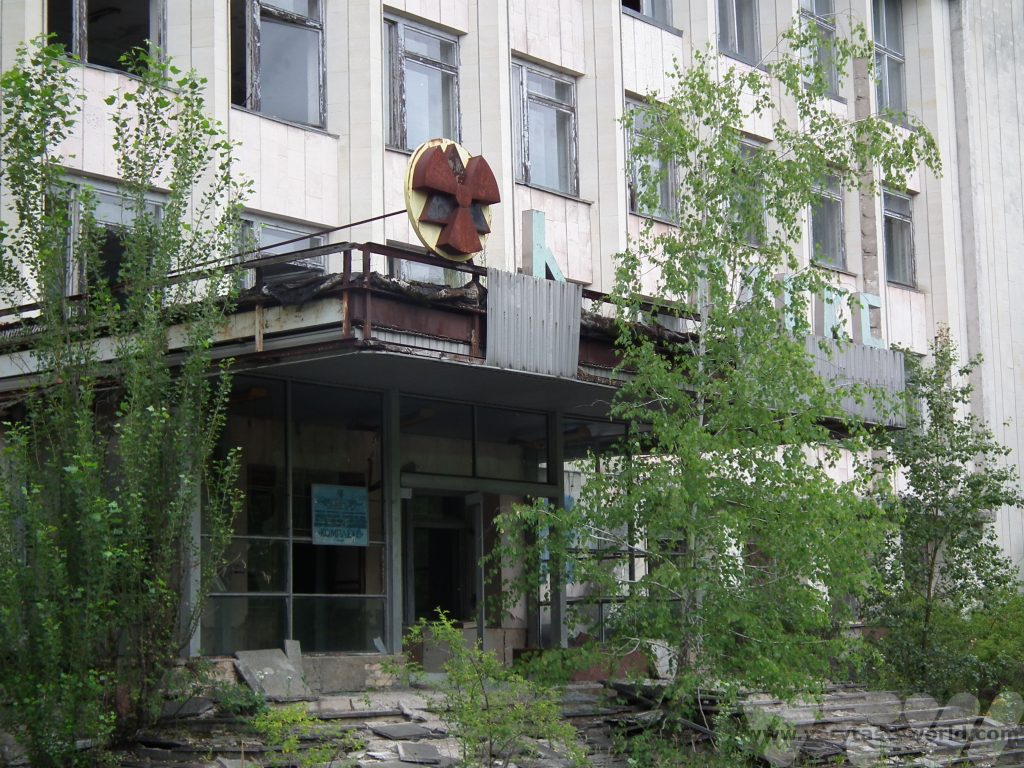
The council building.
What struck us was that many of the public buildings were designed for leisure activities.
Pripyat had the Soviet Union’s first ever supermarket, next to the restaurant…
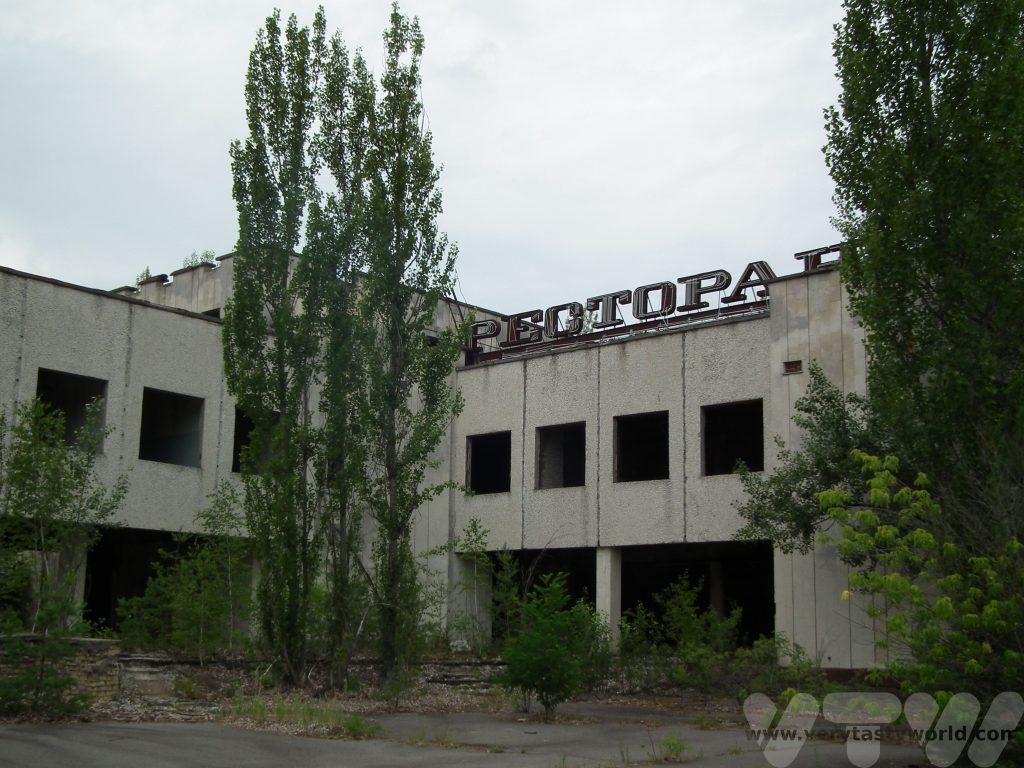
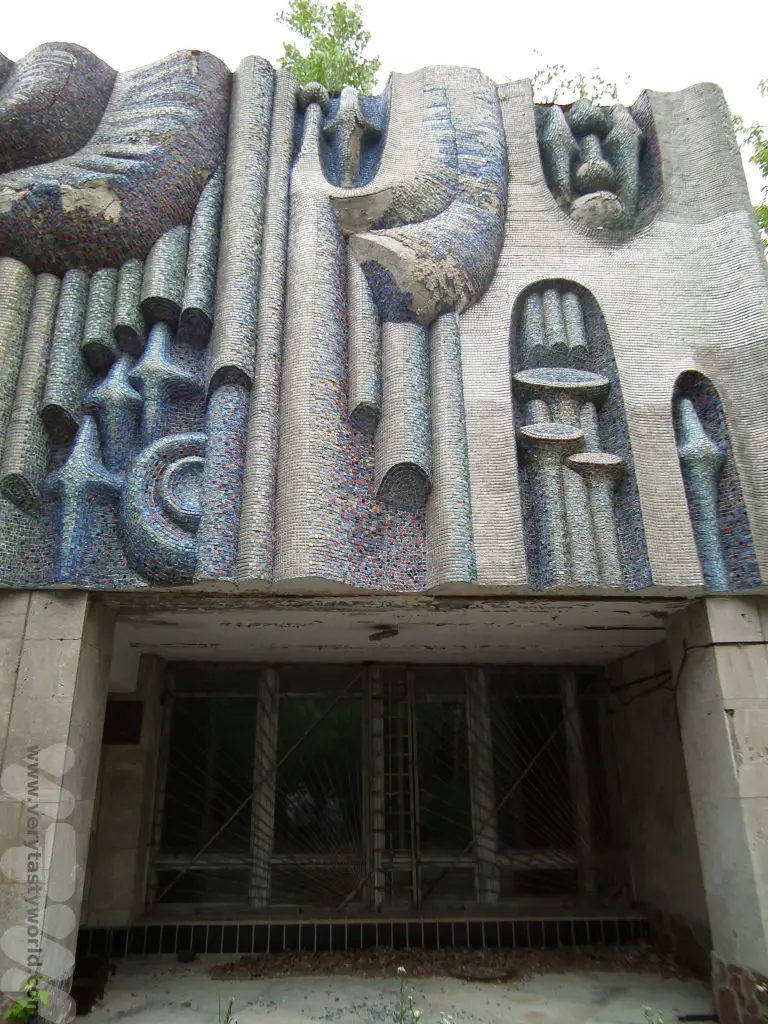
A music centre…
A cinema…
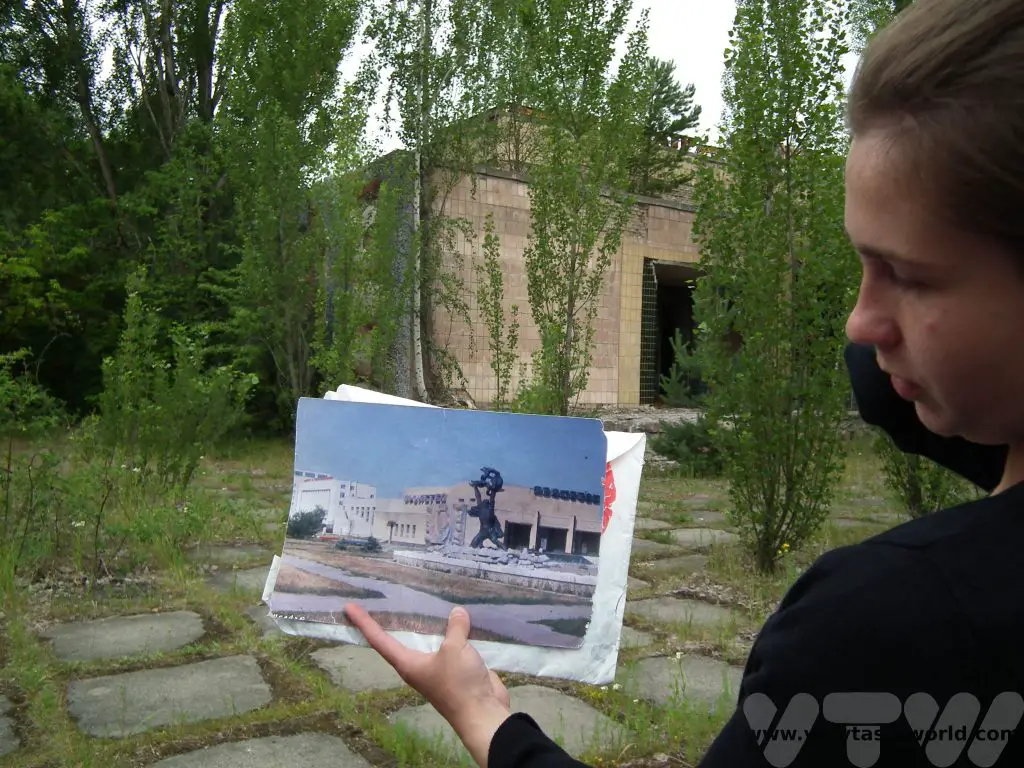
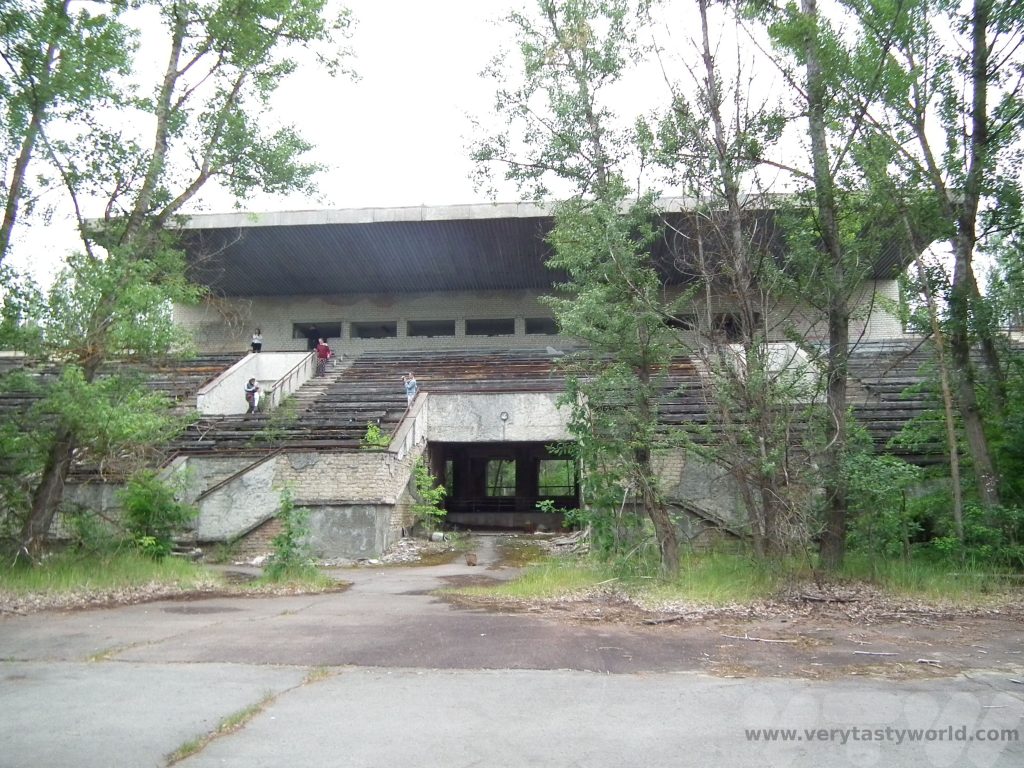
A sports stadium, with running track and football pitch, now entirely overgrown.
Three swimming pools – something that was considered to be unbelievably luxurious in Soviet times.
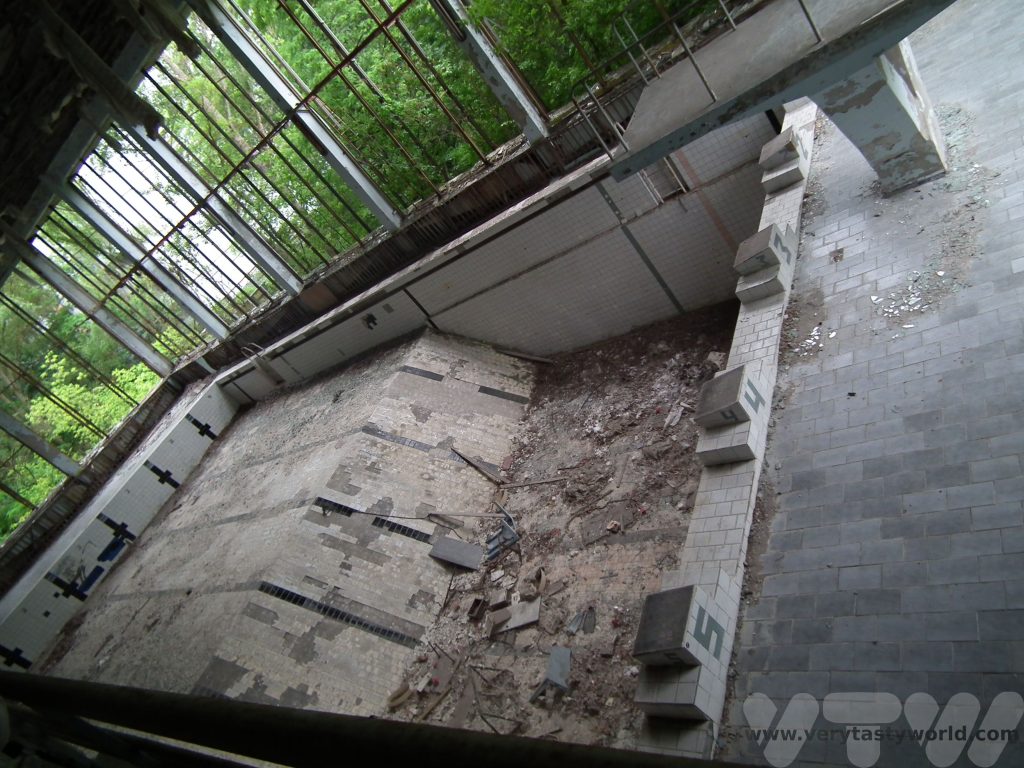
Probably the most iconic image from the town is the fairground which was never used. It was due to open 3 days after the accident took place.
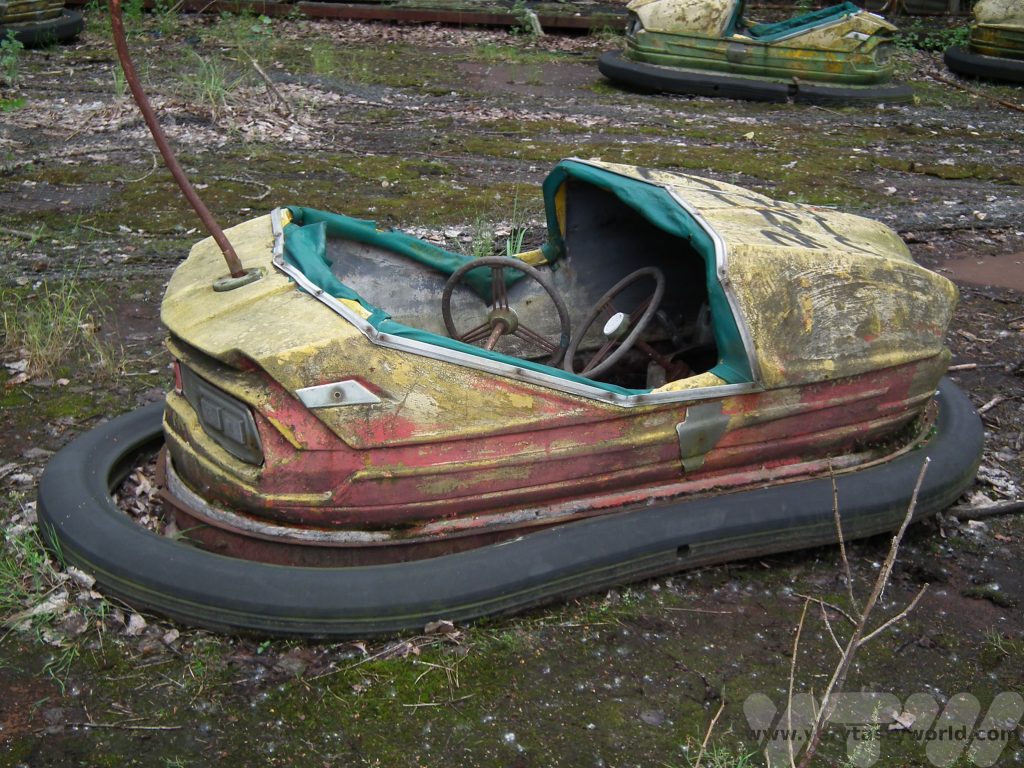
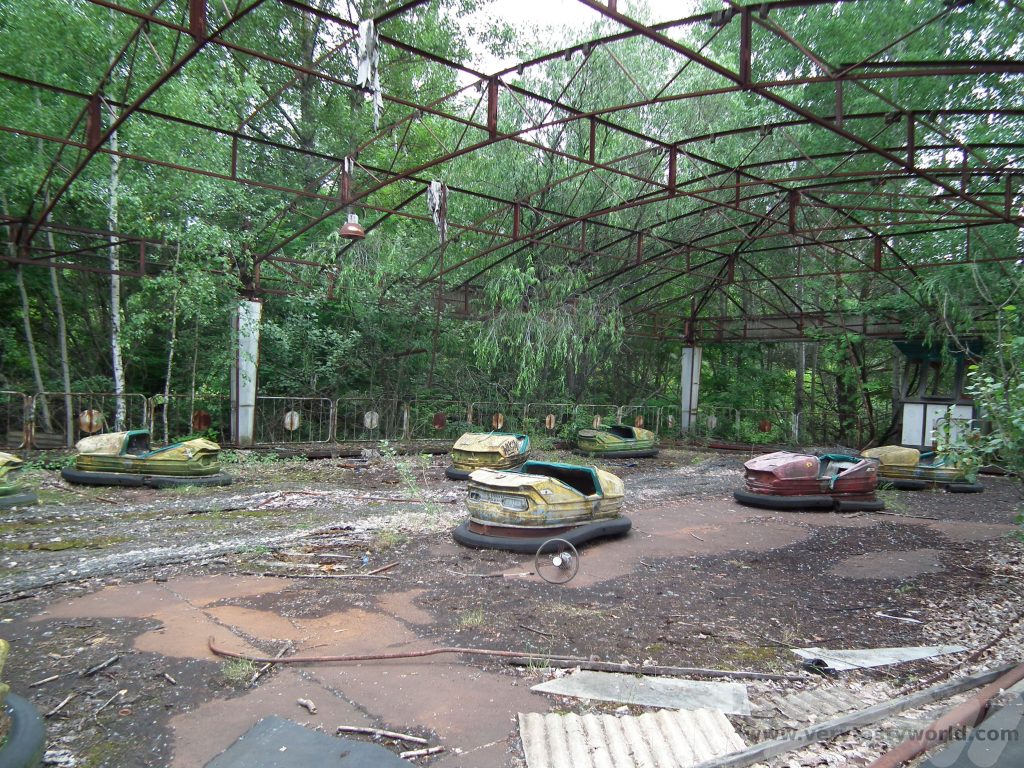
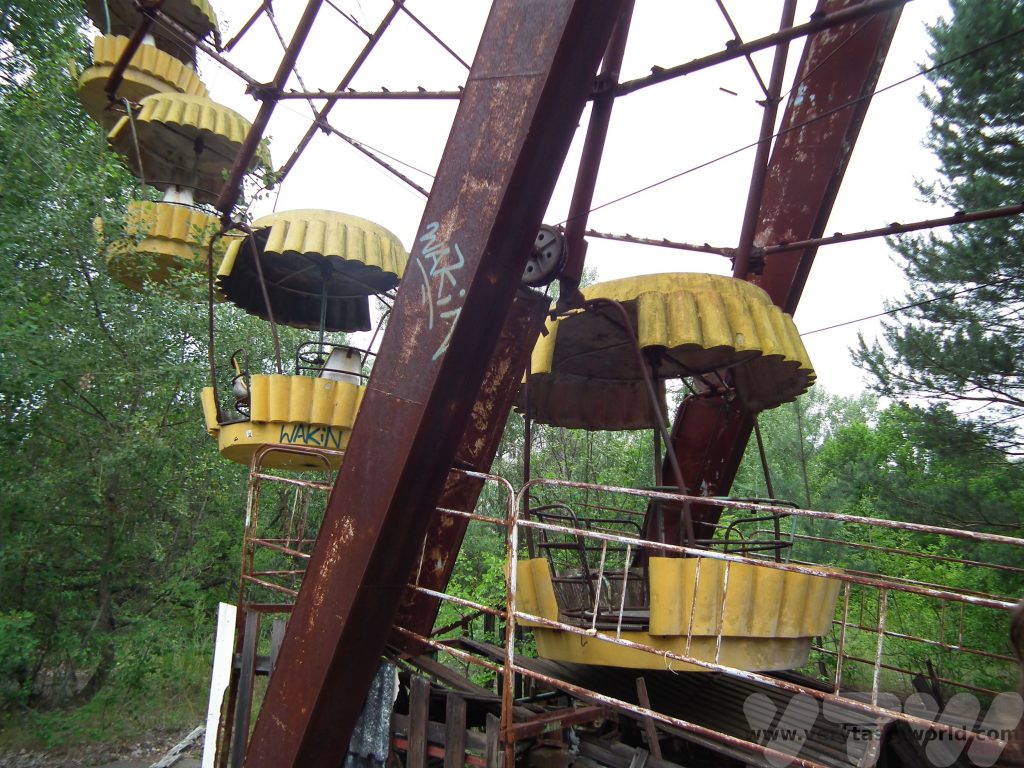
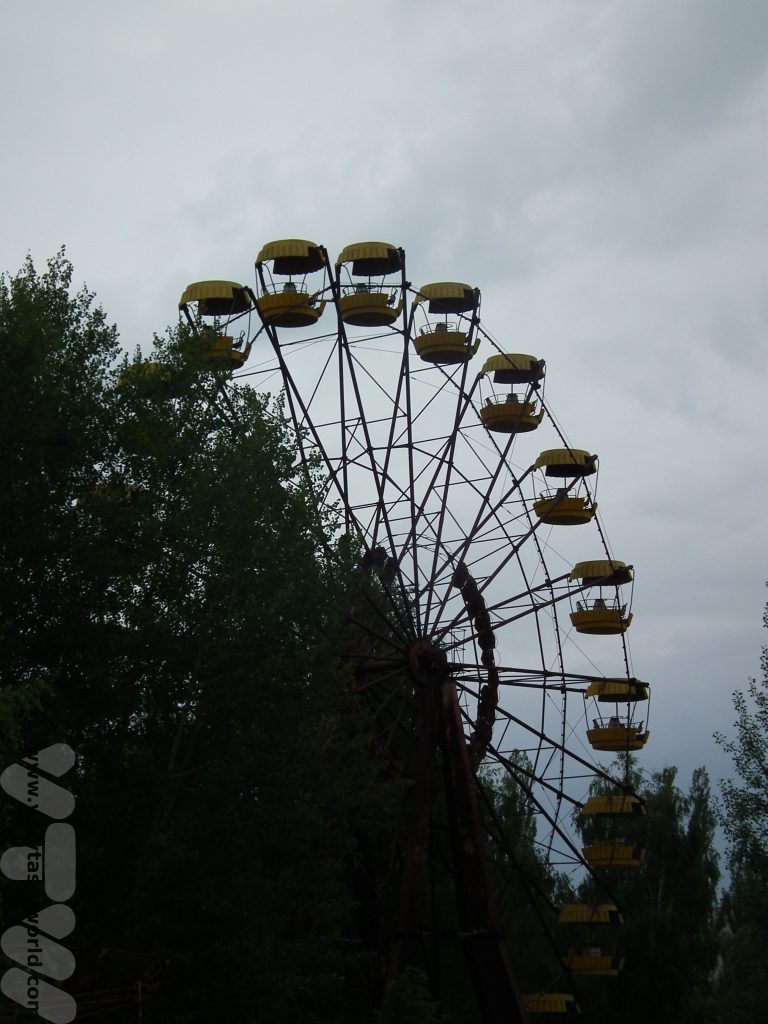
We made a comparison with Ta Prohm in Cambodia – a temple complex abandoned centuries ago and reclaimed by the jungle.
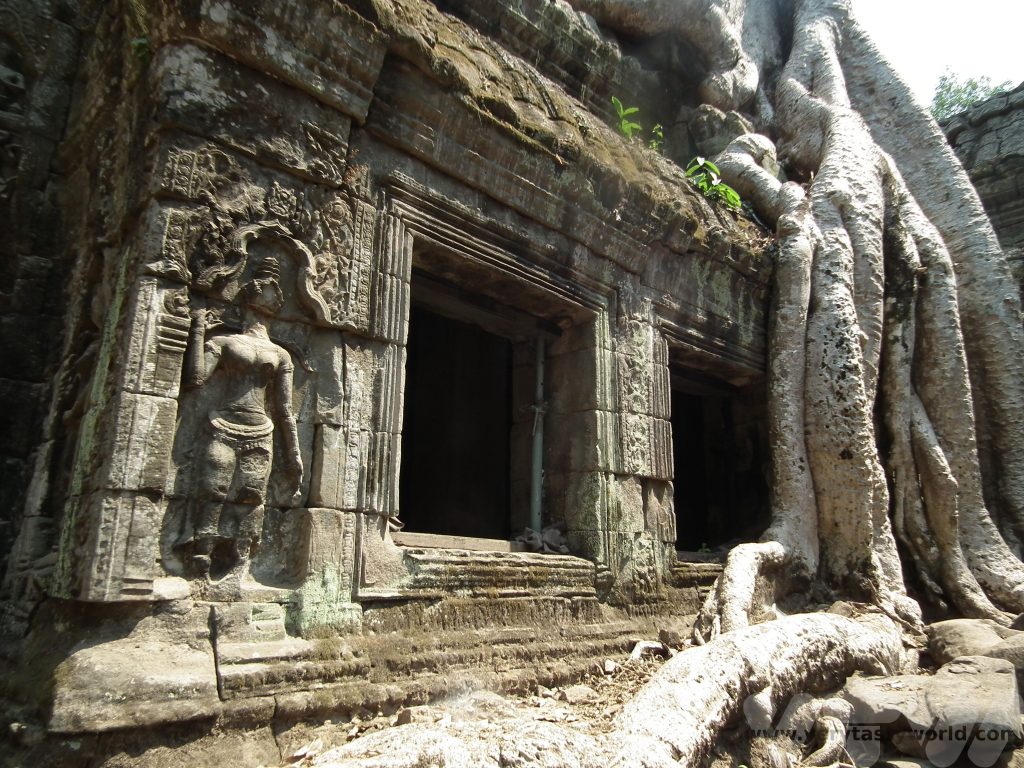
The difference with Ta Prohm is that, while we knew it was an ancient temple, we could only really speculate what the buildings were used for but in Pripyat everything was entirely recognisable.
Chernobyl is the city the power plant was named for (much like the UK, power stations and substations are named for the area in which they are located). It was less contaminated than Pripyat. There are number of people who live and work there, largely at the power plant, keeping it safe. Most work for two weeks inside the zone then have two weeks off. Workers are expecting to be clearing up the plant until 2065.
Chernobyl has a shop (with beer and souvenirs) and a hotel which was basic, but comfortable and clean.
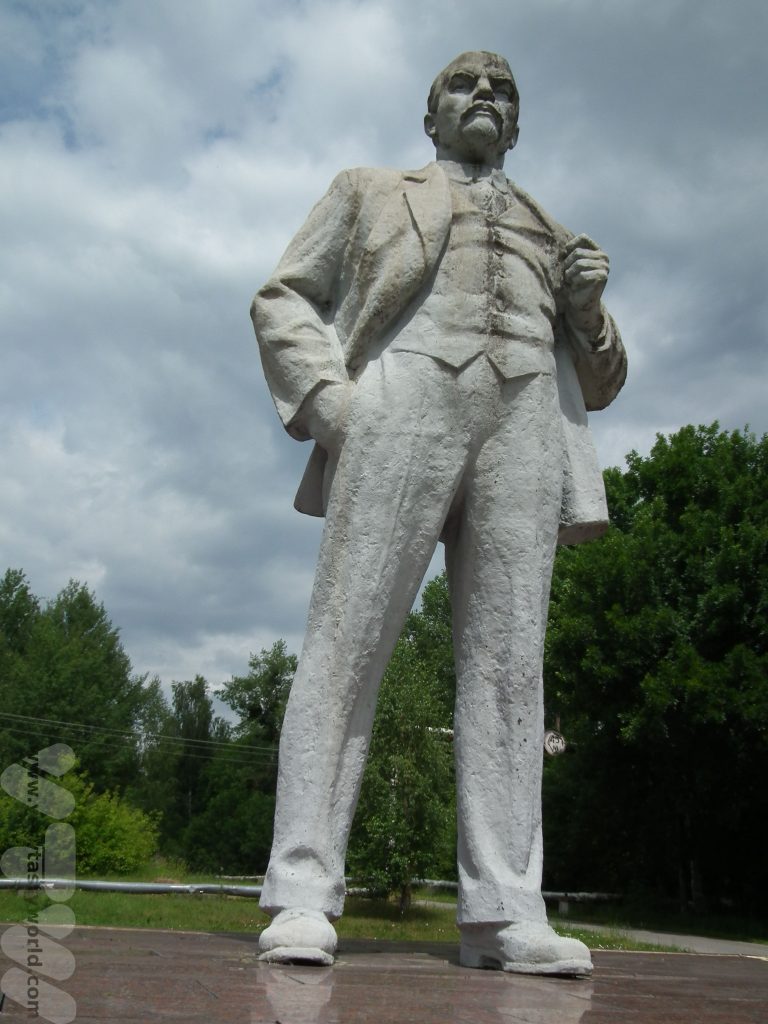
It also has one of the few remaining statues of Lenin left in Ukraine.
And a number of memorials.
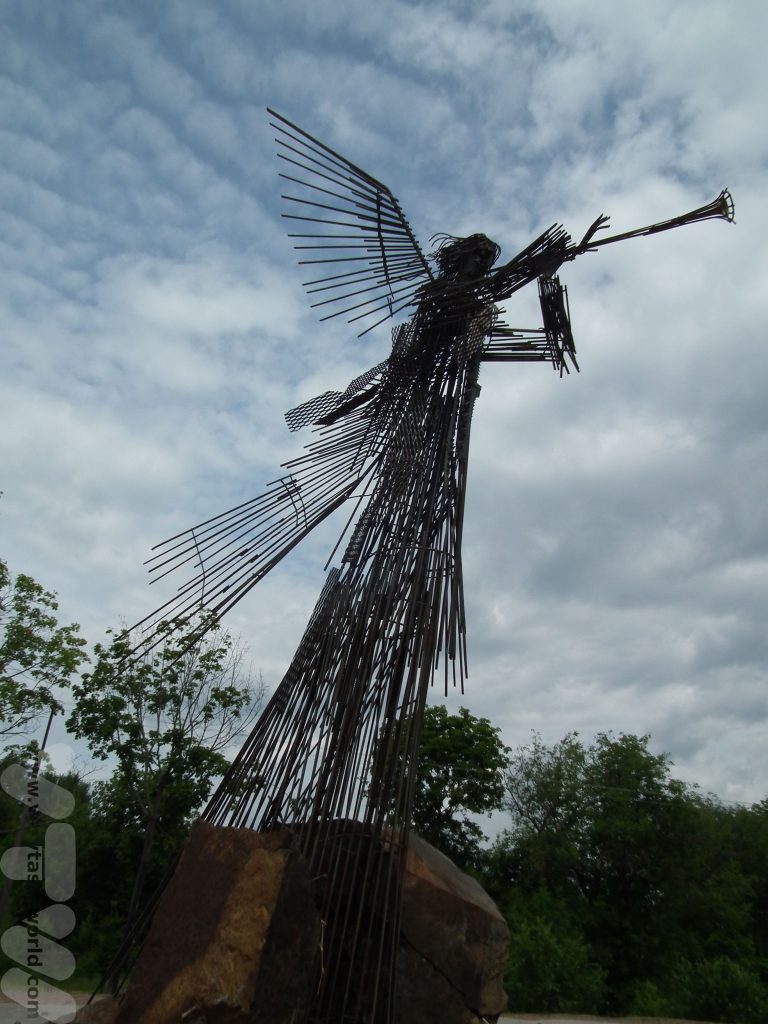
This included an avenue with signs representing all the towns and villages in the regions that had to be evacuated.
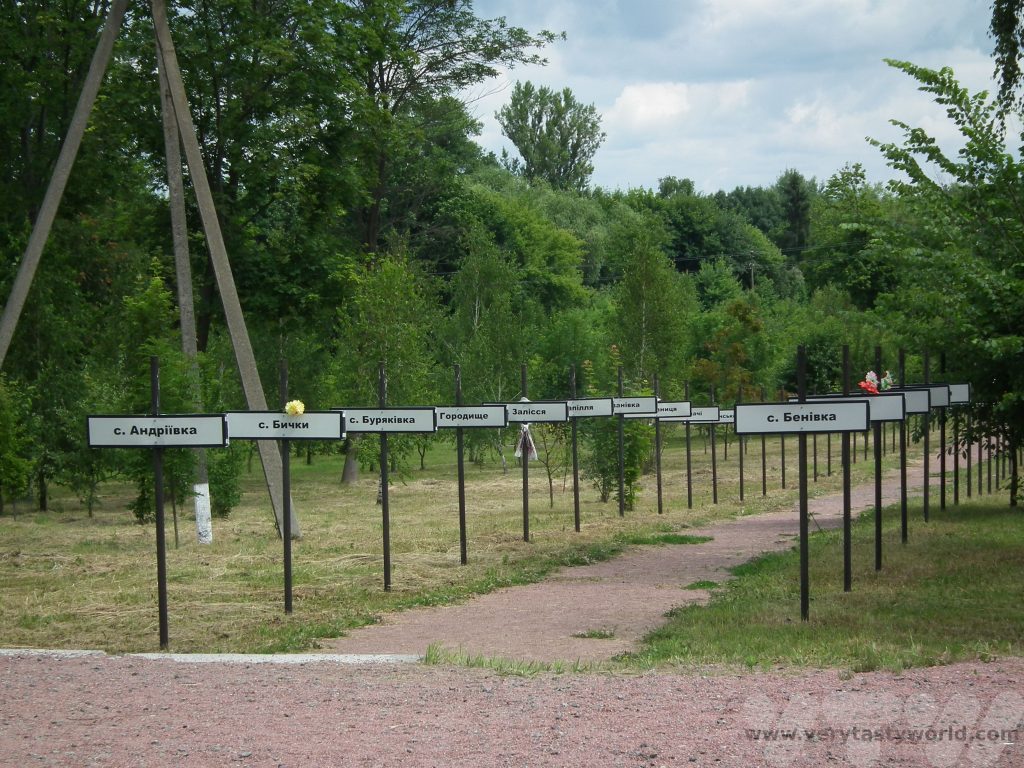
Less well known is the Chernobyl-2 radar installation, a relic from the Cold War. We visited this on the second day. It was a duga radar – the transmitter end (the receiver was at Liubech) – an installation 800m long and 100m high. It was known as the Russian Woodpecker because of the radio interference it generated. Residents of on the top floors of the Pripyat apartment blocks could see it, despite the artificial forest the Soviet authorities had planted to hide it, but they had no idea what it was for…
It is astonishingly huge, so big it was impossible to take a photo of the whole installation.
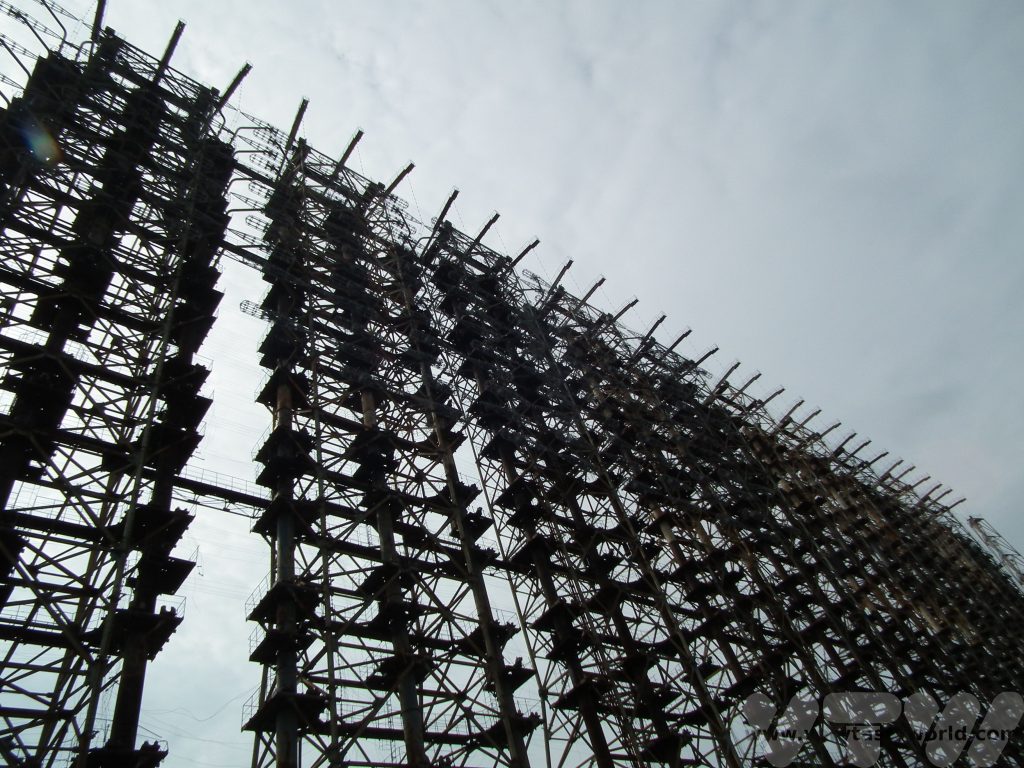
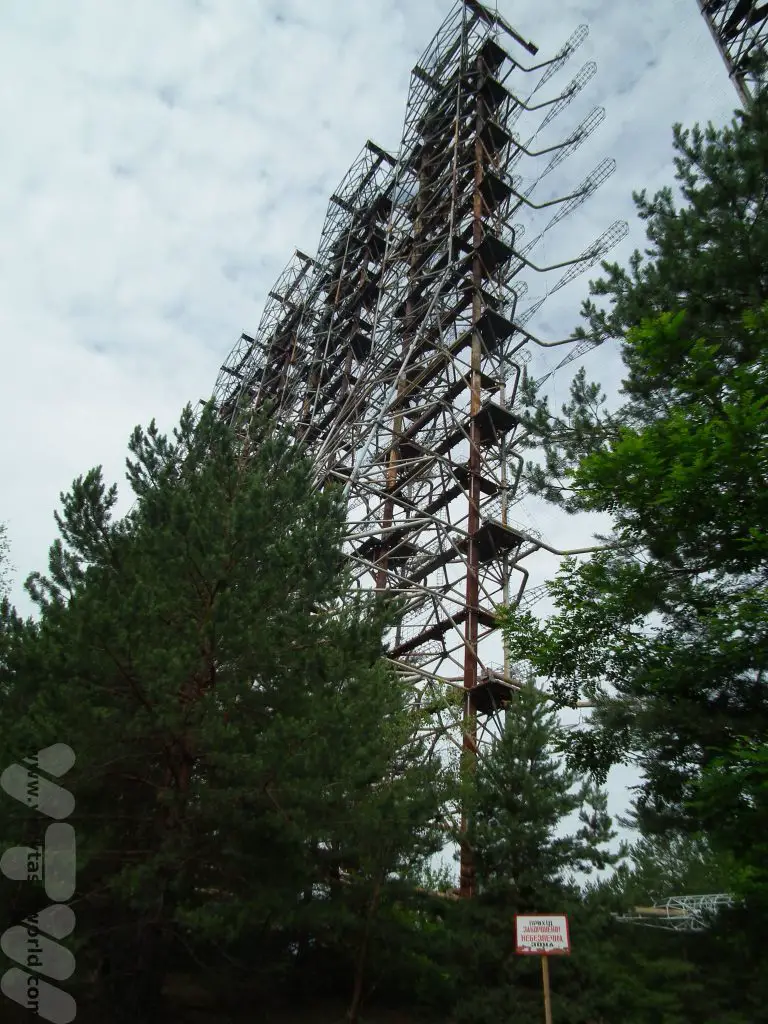
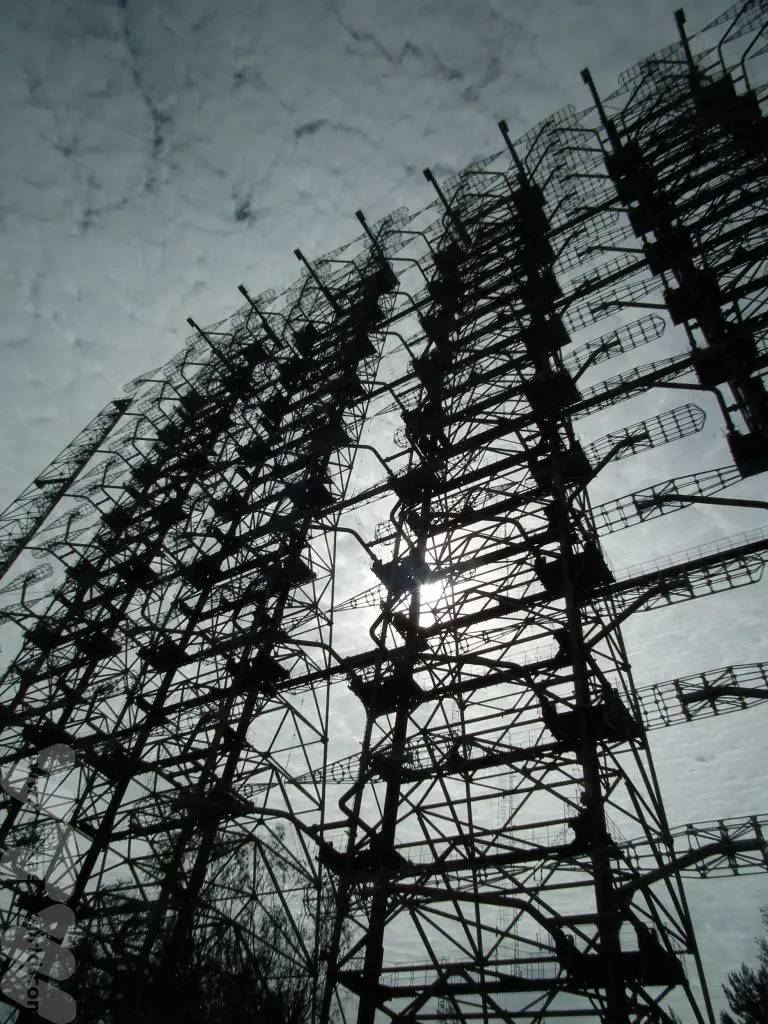
We visited the abandoned control room as well as the training centre, which was fascinating. It was chilling to see pictures of western nukes as the Soviets learned how to identify and raise the alarm on a potential attack. Polaris, Trident, Titan are all familiar words to anyone who grew up during the Cold War.
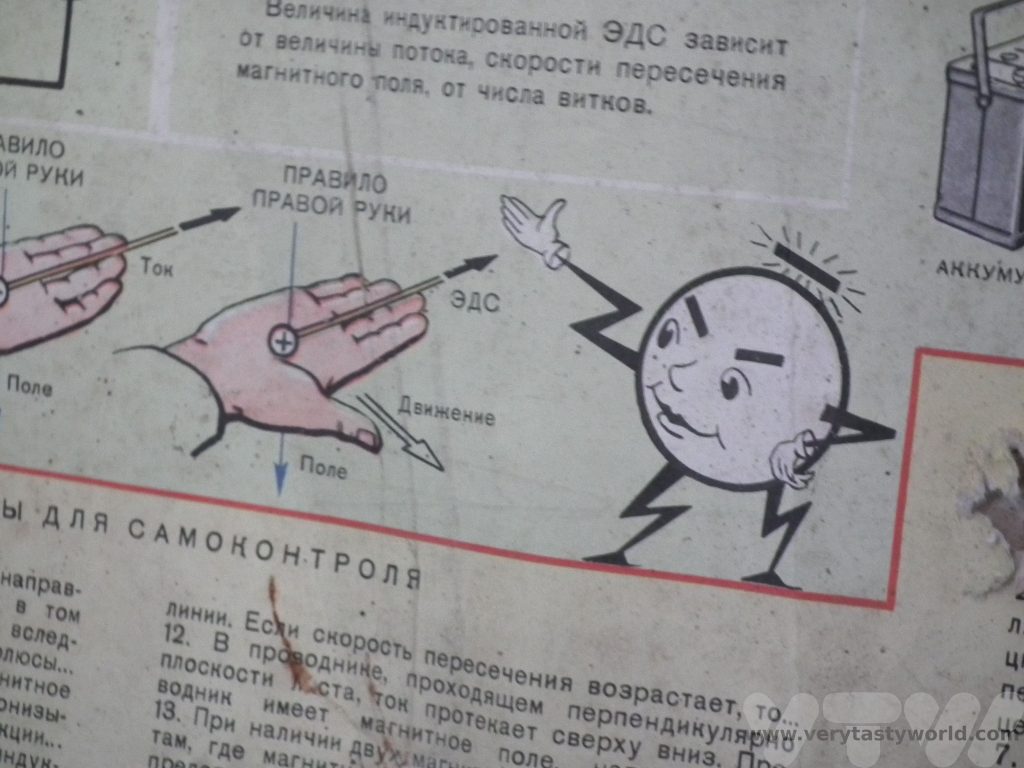
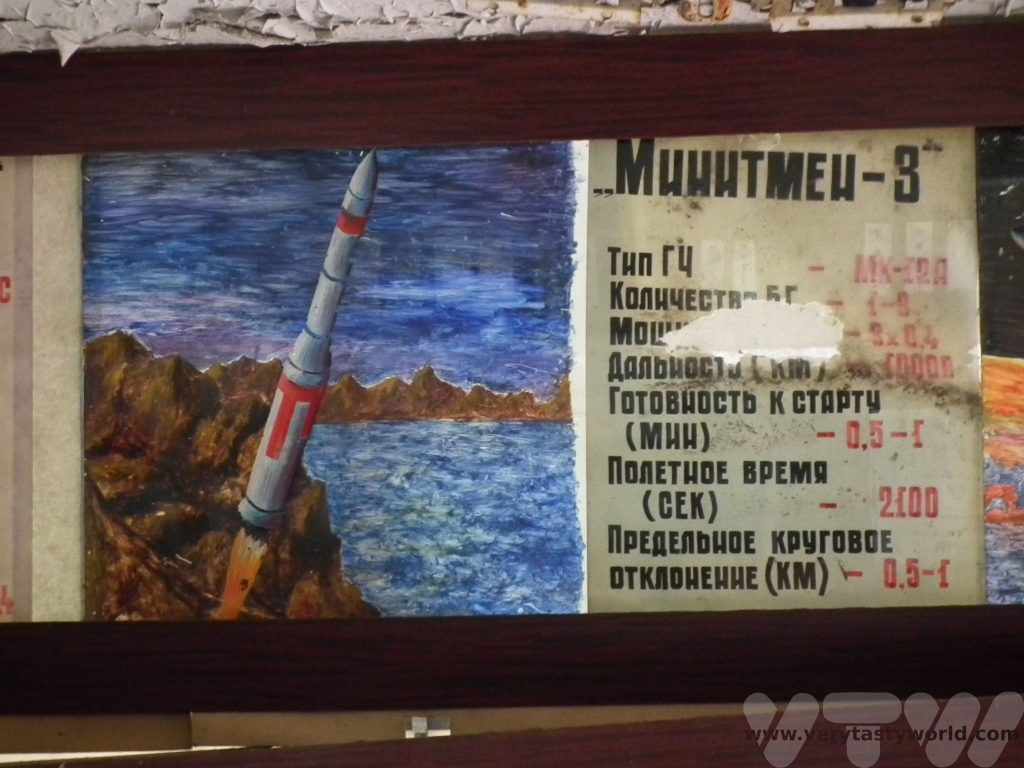
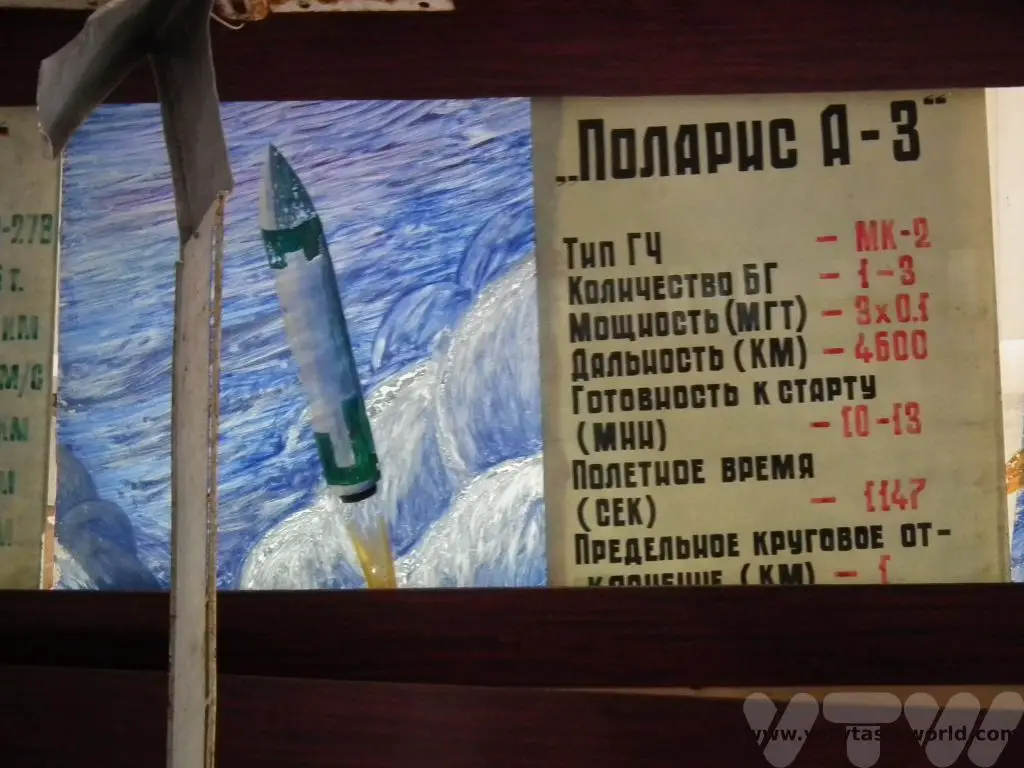
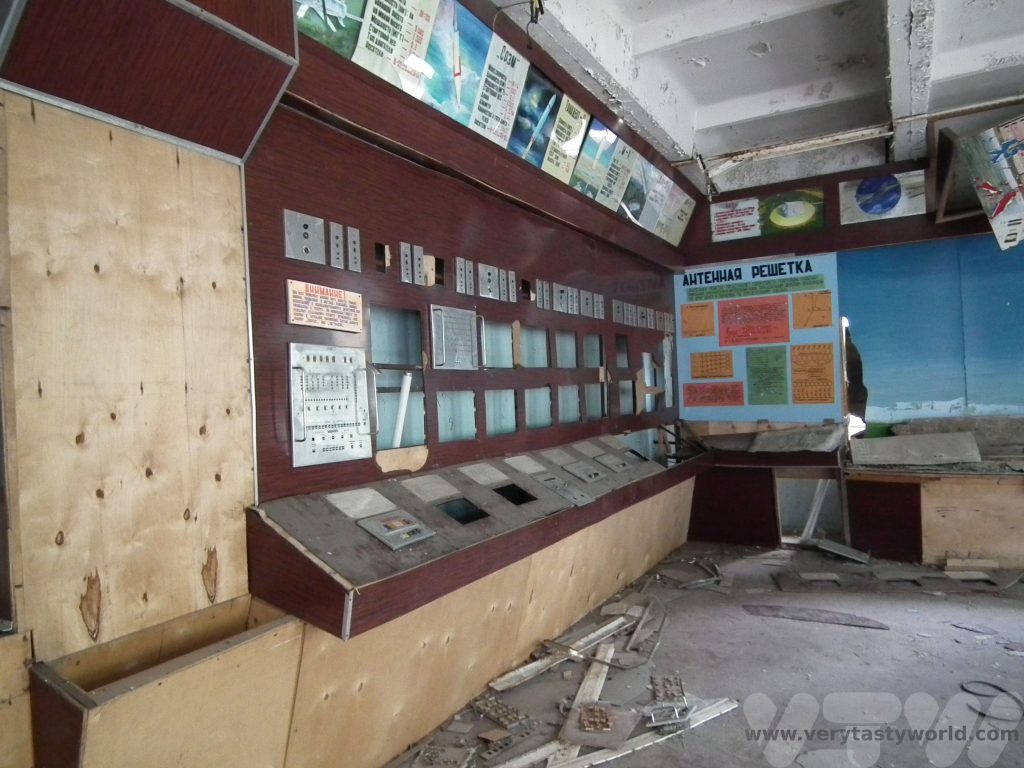
We noted that the pictures of many missiles were set against a backdrop of sky or scenery – rather than simply technical drawings – representing a very real threat.
We reflected a lot about the trip both during and after. While Kyiv was amazing and a place we would love to return to, we couldn’t say that we enjoyed visiting Chernobyl; it feels as though it would be belittling all the people who lost their lives or lost their homes. But it was fascinating, educational and sobering. This visit made us realise quite how privileged we are.








